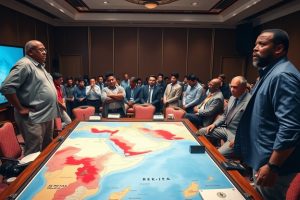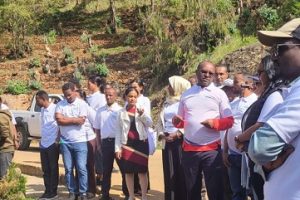
Sof-Omar prehistoric cave painting archeological sites
Sof-Omar prehistoric cave paintings
Sof-Omar Prehistoric Cave is a mosaic of natural wonders, cultures and history. It is located in East Bale zone in Ginnir and Dawe Qanchan districts. It is about 540 km from Addis Ababa and 50 kms from Ginnir town. Pictures of various domestic animals are seen depicted on the walls of the cave. Anyone who pays a visit to this cave never fails to wonder as to who painted the eye-catching pictures on the wall and when. The mystery has to be left to historians and archaeologists to delve into. The rock painting techniques applied and the inks selected for painting hold secrets that need to be unlocked and told. This art is one of the most wonderful attractions of the zones.
Sof-Omar shelter site Morphology
Executive painting technique in black, anthropomorphic figures and humpless vertically cattle fear cow with calf, elephant, man, ostrich, nyala , camel, grant’s gazelle, dikdik ,water buck, bushback and lesser kudu. They consist of isolated figures and some scenes executed in various “breasts” of the cornice and in some naturally smooth spaces of the vault. The isolated figures always vertically depict cattle; on the external ledge we find the figure of a herd, while inside some cows with calves, in one case associated with an anthropomorphic figure.
Sof-Omar Chronology
The shelter opens to the west and measures 100 meters wide, 5-12 high and 7 deep. The paintings are placed between 85cm and 2.60 meters from the current ground level. There are two small hollows, behind a pylon to the right of the shelter, which appears completely black with soot as the shelter is still used by herdsmen. Among the images, the anthropomorphic ones show various degrees of schematization (there are also the H-shaped figures) and there are at least two groups of aligned figures; humpless cattle predominate among animals; note the presence of numerous cows, calf and man. On the soil of the deposit there is an abundant lithic industry. The shelter opens to the northeast. The paintings are all to the right of the entrance: the first group is about 10m from the opening, the second about 20 meters. The first group is made up of black animals followed by other isolated ones. The drawings continue with a panel with large geometric figures and cattle that extend up to the ceiling and finally conclude with some isolated figures. To the left of the large central group is a pink calcites flow which covers many of the figures.
Sof-Omar prehistoric cave paintings (dated back to a period ranging)
The oldest figures are those of the cattle depicted vertically and, for comparisons, most of the figures belonging to the complex may be dated back to a period ranging between the end of the third millennium and the first half of the second millennium BC (about 2300-1500 BC). Further information could be obtained by excavating the Archaeological deposit lying in the Sof Omer Prehistoric cave painting sites.(Sof Omer cave painting;- a period from which there are no clear documents on speleological activities;). The cavity deposit contains both lithic industry and ceramics.
Phases II-III-IV Chronology
Phases – II) Representations of domestic vertically cattle schematized on a basic drawing which highlights the curve of the belly. Long duration over time: from the most ancient moments to recent times, where these representations intersect with cultural and “stylistic” innovations. The human figure is strongly stylized; weapons are depicted. Iconographic themes identified: the herd; the cow with the calf; the group of men lined up.
Phases – III) although united by a «family resemblance», the representations later differ in styles, linked to different geographical areas or social environments, following particular processes summing up the figure or a part of it: bovines with the body « a biped», with the rectangular body and only two strokes for the legs, or exasperation of the horns. At this time, depictions of cattle with extremely elongated bodies appear. The animals are rendered in many cases in a life like way. Even the human figure is represented in a realistic way, with space-time variations and simplifications.
Phases – IV) continuation of the figurative traditions towards more simplified and stylized forms: on the one hand the schematization of the bovine and its horns, begun previously, translates into allusive and ideographic figures; on the other hand we are witnessing the exhaustion of a figurative tradition in «whipped» and stereotyped forms. The comb-shaped zoomorphic figures lend themselves in a very late moment to small narratives with figures of warriors on horseback and camels. Writings, tribal marks and naïve designs continue the tradition of painting or tracing marks on rocks up to the present day. Iconographic themes identified: the herd; fight scenes. The various iconographic themes of Oromia’s pastoral sphere transversely cross all the sub-styles of paintings and engravings corresponding to different chronological moments and different ethnic groups. Through Oromia’s analysis, some interpretations of the figurations are proposed starting from their correlations with ethnographic and ethnological models. In rock iconography there are themes or combinations that seem to be part of a greater conceptual plot. These are above all naturalistic representations, also characteristic of Saharan and Nubian art, which could also represent myths whose meaning was inaccessible to the uninitiated or be narratives that had the purpose of explaining subsistence practices and manifestations of cultural and spiritual entities. Among the various narratives there are some which, following particular space-time dynamics, are linked to specific themes of figurative expression.
Pastoralist Rock Arts in Oromia
In recent years over 127 rock arts and cave paintings sites were found in East and West Hararghe zone, Borana zone, East Bale zone, and West Guji and East Wollaga zone documented by Nasir Ahmed the first Ehiopian Speleologist researcher.
The Pastoralist and Farmer Arts of Oromia
Oromia’s pastoralist and farming groups engaged in more rock art and cave paintings traditions than did the hunter-gatherer groups, but each tradition occurs at fewer sites and each is more localised, typically being found at a few hundred sites each, rather than at many thousands as is the case for the hunter-gatherer traditions. Pastoralist and farmer traditions tend to use white, black and red as their primary colour and the pigment is most often applied by hand rather than using a brush. Many pastoralist and farmer groups did not make rock art, choosing instead to make their ritual art in a medium that could more easily be hidden, such as wooden and clay figurines and hut paintings. Oromia has four main hunter-gatherer rock art zones. Each zone has its own particular style of depiction and these are described and illustrated here. Within each zone one finds considerable regional variation; however, broad and common uses of colour, technique, subjects, and symbolism suggest that each zone is a particular and distinctive artistic tradition. The subjects and symbolic concerns of each tradition are very different, but they are united by a common concern with the spiritual world and with spirit world forces.
Many Peoples, Many Cave Painting and Rock Arts, One Future
As the place is one where art began, our cave paintings and rock art heritages are truly heritages that unite us across Africa. Almost every cultural and linguistic group in Oromia has made rock art in some place at some time, and while each tradition is unique and distinctive, if one goes back far enough, they all appear to have a common root. Rock art is thus a showcase of Africa’s richness and diversity. It is also a showcase of its unifying ancestry. Naturally, cave painting is robust and enduring. If cared for, it will survive for our enjoyment and benefit for many millennia, but if it is insensitively exploited or disregarded, it will be destroyed in just a few years. Once destroyed, it will be gone forever. Our rock art is a source of pride to us. It is a reminder of a history of cultural achievement in Oromia that stretches back countless millennia; it is unparalleled in its fineness and sophistication. We must take care of it.
Rock Art Tourism and the Alleviation of Poverty
Rock art does not only provide us with a strong sense of pride in a rich African past, it can also play a key role in our future. Cultural tourism is the fastest growing section of the tourism industry and tourism is the fastest growing industry in Africa. There is no better place to experience cultural heritage than in Africa-where culture began. Ultimately, in coming to Africa, everyone is coming ‘home’ as Africa is where all our ancestors lived. Africa’s rock art heritage is the best in the world and it is also among the world’s best understood rock art, thanks to many decades of quality rock art research. We can thus take visitors to a rock art site and explain many aspects of its history, complex symbolism, and metaphors. Each site has its own fascinating and unique story. And, because of research and study, the stories are ‘real’; the days of standing bewildered in front of the art, guessing at its meaning, are, thankfully, gone.
Rock art tourism is particularly valuable because it takes people to remote rural areas where the benefits of tourism are most desperately needed and where investment and jobs will be of greatest benefit in the fight against poverty. For conservation reasons, and to make it a richer and more rewarding experience, all visitors to rock arts site must be accompanied by a guide. Poor site management can result in a site being destroyed in just a few years. So although the development of a sensitive and sustainable public rock art requires significant investment of time and money, once that investment is made, the site will provide permanent jobs and income for centuries to come. The future of Ethiopia ancient prehistoric rock art and cave painting is in our hands; if we take care of it, it will make our own future that much richer.
(EDITOR’S NOTE: Nasir Ahmed is the First Ethiopian Speleologist who is working with Oromia Culture and Tourism Bureau and Oromia Tourism Commission.)
BY NASIR AHMED
THE ETHIOPIAN HERALD FRIDAY 4 AUGUST 2023





